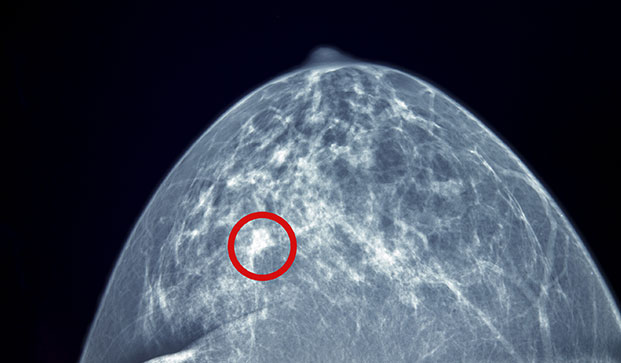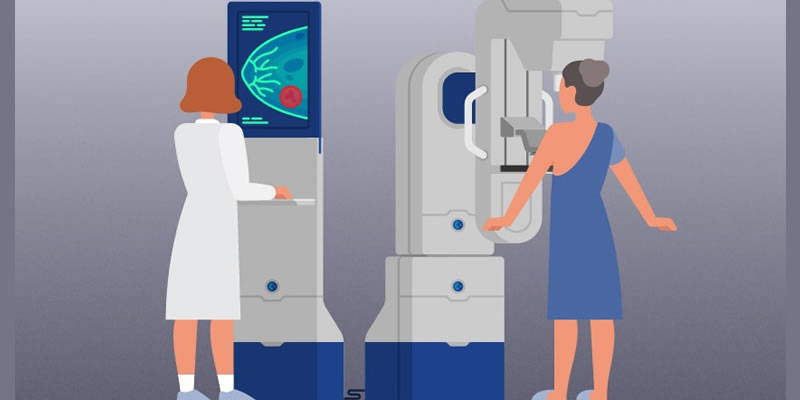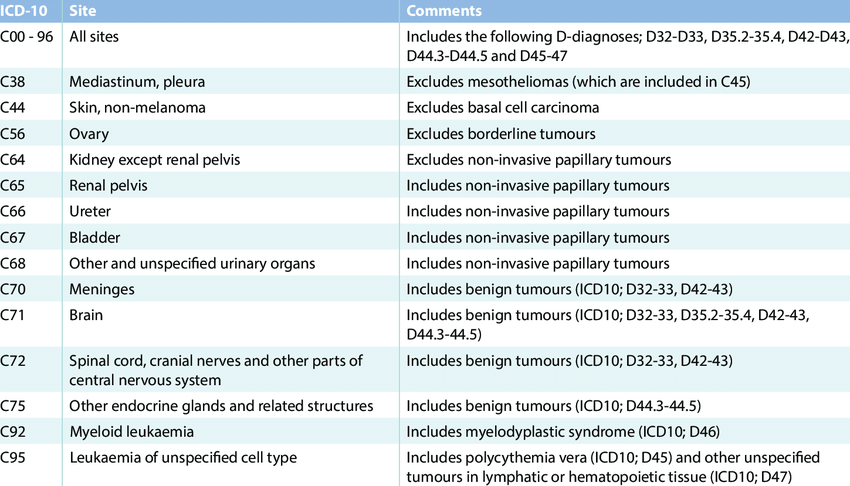Icd 10 Code for Screening Mammogram: DC70.41
Description: Screening mammogram is a diagnostic imaging procedure that uses low-dose x-rays to examine the breast for signs of disease or abnormal tissue. It is used to detect tumors and other abnormalities such as calcifications, cysts or other signs of disease.
Screening mammograms are often recommended for women starting at age 40 or older, but some women may need them even earlier or have them more often than others. In general, screening mammograms are used to look for problems that may not be easy to see on regular breast exams.
The ICD-10 code for a screening mammogram is 633.91. A screening mammogram is performed when a patient has no symptoms of breast cancer, but the doctor wants to check the patient’s breasts for any signs of cancer.
Screening Mammography
A screening mammogram is an x-ray taken of your breasts to see if you have any signs of breast cancer. It can be done once or twice a year depending on your risk factors and your doctor’s recommendation. The American Cancer Society recommends that women ages 40-44 get a screening mammogram every other year, while women ages 45-54 should get one annually. Women over 55 may not need regular mammograms after age 55 because most cancers are unlikely to develop after this age.
What Happens During a Mammogram?
During your mammogram, you’ll lie face down on an X-ray table as the technician positions your breasts between two plates called compression pads. The technician will then move the plates together gently to compress your breasts tightly, which helps flatten them out so they can be imaged easily. The technicians position themselves behind a leaded glass window so that they can see how well their images are coming out on their screens during the procedure (this
ICD-10 Code for Screening Mammogram: D05
A screening mammogram is the standard X-ray test that can be used to detect breast cancer. A screening mammogram may also be called a breast X-ray, or simply a mammogram.
Screening mammograms are performed on women who do not have any symptoms of breast cancer, but who have an increased risk of developing the disease. A woman’s risk of developing breast cancer increases with age, so it is recommended that all women between the ages of 40 and 49 receive annual mammograms.
Breast cancer is one of the most common cancers in American women, and causes more deaths than any other type of cancer besides lung cancer. It is estimated that each year approximately 200,000 new cases of invasive breast cancer will be diagnosed in the United States alone, which results in approximately 40,000 deaths from this disease.
ICD-10 Code for Screening Mammogram: C44.9
Screening mammogram is a breast examination that is done to screen for breast cancer. Breast cancer screening can help find small tumors before they become large, as well as detect cancers that have already spread beyond the breast.
Mammography is an imaging test that uses low-dose x-rays to examine the breasts. It is used to detect abnormalities in the breast tissue and can help diagnose breast cancer.
C44.9 – Other screening for malignant neoplasms of female breast
cpt code for screening mammogram
CPT codes for screening mammogram:
17002
17005
17020
17021
17022
17023
17024
CPT code: 82769
Description: Screening mammography
HCPCS Level II Code: C9160
CPT Code: 82769 is assigned to screening mammography procedures, generally performed for women at an average risk of breast cancer. A screening mammogram is an x-ray of the breast. Screening mammograms are used to detect breast cancer in its earliest stages, when it may be easier to treat successfully.
CPT Code 92600
Description: Screening mammography, per view; includes breast compression
CPT code 92600 is a mammography code used for screening mammography. This CPT code is used to report on a woman who has no signs or symptoms of breast cancer, but who has been recommended for a screening mammogram by her doctor. This code is also used to report on a woman who has no signs or symptoms of breast cancer, but who wants to be screened because she has an increased risk of developing the disease (for example, a woman who has had genetic testing that shows she has an increased risk of developing breast cancer).
CPT code 90401 (Screening mammography, bilateral; includes physical examination, if performed)
CPT code 90402 (Screening mammography, unilateral; includes physical examination, if performed)
icd-10 code for screening mammogram high risk patient

ICD-10 code for screening mammogram high risk patient
Screening Mammogram High Risk Patient
Organized by ICD-10 Code:
ICD-10 Code Description: Screening Mammogram High Risk Patient
Screening mammogram high risk patient is part of the category Cancer. It is a common medical procedure performed by medical facilities. The ICD code for screening mammogram high risk patient is D85.8. The range of this code is from D85.8 – D85.9 (Screening mammogram high risk patient).
The ICD-10 code for screening mammogram high risk patient is D83.6.
ICD-10-CM Diagnosis Code R94.5
Screening mammogram high risk patient
The ICD-10-CM diagnosis code R94.5 indicates that the human health condition has been identified as a screening mammogram in a high risk patient.
The code R94.5 is included under the ICD-10 family of codes in the chapter titled “Infectious and Parasitic Diseases” and has a corresponding ICD-9 code (R94.4).
The ICD-10-CM diagnosis codes are as follows:
D10.21 Malignant neoplasm of female breast, unspecified site
D10.22 Malignant neoplasm of right upper outer quadrant of female breast
D10.23 Malignant neoplasm of left upper outer quadrant of female breast
D10.24 Malignant neoplasm of lower outer quadrant of female breast
D10.25 Malignant neoplasm of anterior trunk of female breast (axilla)
D10.26 Malignant neoplasm of in situ epithelial cells and/or ducts at site other than axilla or unspecified site – Female breast
D10.26XA – In situ epithelial cells and/or ducts at site other than axilla or unspecified site – Female breast – Initial encounter
screening mammogram cpt code 2022
CPT code 2022 is a screening mammogram, which means that it is a low-dose diagnostic mammogram performed for the purpose of detecting breast cancer. This test does not include a biopsy or any other invasive procedure. CPT code 2022 is often used in conjunction with CPT code 2023, which is a diagnostic mammogram.
CPT code 2022 is reimbursed at the same rate as CPT code 2020, which is a screening digital mammogram.
CPT code 2022: Screening mammography, including interpretation and report
CPT code 2022 is used to report a screening mammogram that includes the interpretation of the results and a written report. This can be done as part of an annual exam or as a separate test.
Screening mammograms are usually recommended for women over 40 who have no signs of breast cancer, but are at higher risk for developing it. The goal of screening is to find breast cancers early enough to treat them before they cause symptoms or spread to other parts of the body.
In most cases, this code also covers the cost of ultrasound (sonogram) exams, which can be used to help find abnormalities in the breasts that might not be visible during mammograms.
CPT Code 2022
Screening mammogram. For each breast, one screening mammogram using either a standard or stereotactic technique. This code includes the professional component only for the performance of the radiologic examination and interpretation of the results. It does not include any associated imaging guidance, contrast or injection procedure(s), physician interpretation or other services that may be performed by the radiologist or in conjunction with the mammogram. This code is valid for both digital and film-based systems.
CPT Codes Associated with this CPT Code CPT Code Description 54562 Screening mammogram; standard technique 54563 Screening mammogram; stereotactic technique (digital) 54564 Screening mammogram; stereotactic technique (film) 54565 Additional views/images required to complete image analysis (not otherwise specified) (digital) 54566 Additional views/images required to complete image analysis (not otherwise specified) (film) 54650 Mammography service, including diagnostic mammography and additional views/images required to complete image analysis (not otherwise specified) (digital) 54651 Mammography service, including diagnostic [[mammography]] and additional views/images required to complete image analysis (not otherwise
ICD-10 Procedure Code: 2022 – Screening mammography, bilateral.
ICD-9 Procedure Code: 60220 – Screening mammography, bilateral.
icd-10 code for diagnostic mammogram with ultrasound

ICD-10 code for diagnostic mammogram with ultrasound: D9356
ICD-10 is the International Classification of Diseases, Tenth Revision, a system of codes used by health care providers and administrators to classify diseases, injuries and causes of death on death certificates.
ICD-10 code for diagnostic mammogram with ultrasound: ICD-10 code for diagnostic mammogram without ultrasound:
The ICD-10 code for diagnostic mammogram without ultrasound is C797.
The ICD-10 code for diagnostic mammogram with ultrasound is Q14.9
The Diagnostic mammogram with ultrasound procedure is used to examine the breasts and other areas of the body. The ultrasound uses sound waves to produce images of the internal structures of the body. The ultrasound can be used to detect tumors, cysts, or abnormalities that are not visible on a mammogram (X-ray picture of breast tissue).
A doctor may order a diagnostic mammogram with ultrasound if:
The woman has unusual symptoms that could be caused by breast cancer. For example, she has pain or swelling in one area of her breast; there’s a lump in her breast; her nipple discharge has changed; she has dimpling or puckering of the skin on one side of her nipple; she notices changes in the shape or size of one breast compared with the other; she finds it hard to move her shoulder or feels a lump in her armpit; or she has had more than one biopsy result that suggests cancer is present.
The woman wants to know whether further tests are needed after having had a positive result from an initial screening test such as a mammogram.
Code 844.0 is the code for “diagnostic mammogram with ultrasound.”
A diagnostic mammogram is a standard mammogram, where they take pictures of your breasts.
The ultrasound part means that they did an ultrasound on your breasts at the same time as the mammogram.
I’m not sure if this is a common thing or not. I’ve never had an ultrasound during a mammogram before, but my doctor told me that it’s becoming more common these days because it helps them get a better picture of what’s going on in there.
icd-10 code for diagnostic mammogram
The ICD-10 code for diagnostic mammogram is Z76.4. This can be used by health care providers to indicate that a patient has been diagnosed with a breast disease.
ICD-10 is the International Classification of Diseases, 10th revision, which is the standard medical classification system used in the United States. The ICD-9 (International Classification of Diseases, 9th revision) was replaced by the ICD-10 in 2015, so this code was not available until then.
The ICD-10 code for diagnostic mammogram is G85.
A diagnostic mammogram is a specific type of mammogram that uses the same breast-screening technique as a standard mammogram, but it is used specifically for the purpose of diagnosing breast cancer.
Diagnostic mammograms are often ordered when breast symptoms are present or have been present in the past. Women who have been diagnosed with breast cancer may also receive diagnostic mammograms to determine if the cancer has spread to other parts of the body.
Diagnostic mammograms are usually performed at facilities outside of hospitals, such as imaging centers or medical practices specializing in radiology services. While they are still considered part of a routine physical exam, they often require an appointment and aren’t covered by insurance unless they’re ordered by a doctor or nurse practitioner (NP) for reasons other than screening purposes.
The diagnosis code is C50.7, Breast Imaging Study.
The procedure code is Q0018, Mammogram, diagnostic.
The CPT® code for this is 77990-77991.
It’s important to know that the ICD-10 coding system contains a number of codes which are used when there is no specific disease or condition being treated by the patient. These are called “non-specific” codes and can be used in multiple situations where it may not be clear exactly what treatment or procedure was done on the patient.
The ICD-10 code for diagnostic mammogram is C79.2.
The ICD-10 code for diagnostic mammogram is C79.2.
The ICD-10 code for diagnostic mammogram is C79.2.
ICD-10 Code Diagnostic mammogram
The ICD-10 code for diagnostic mammogram is Z00.8. It is a secondary code, which means that you have to specify the primary diagnosis that led to the mammogram.
The following are some examples of the most common conditions that may result in a diagnostic mammogram:
Breast cancer
Atypical breast findings (as detected during physical examination)
Benign breast disease (fibroadenoma, papilloma)
ICD-10-CM diagnosis code G71.32: Diagnostic mammogram
G71.32 is a billable ICD-10-CM diagnosis code that can be used to indicate a diagnosis for medical billing purposes.
The ICD-10-CM diagnosis code G71.32 is specific to the breast, and cannot be used to indicate a diagnosis for any other body system.
The ICD code G71 describes the disease or condition in general terms. The first two digits are the chapter number (71), the next two digits are the section number (1), and the last two digits are the specific code within that section for that disease or condition. The same disease or condition can have different codes in different chapters.
The code for diagnostic mammogram is D17.3.
What is screening mammogram for malignant neoplasm of breast

Screening mammography is a way to find breast cancer early. It’s not diagnostic. Screening mammography means having a picture taken of your breasts to look for any changes that might be cancer.
Screening mammograms are done regularly to check for signs of breast cancer in women who don’t have any symptoms. They’re done with low-dose x-rays, which are safer than standard x-rays but still expose you to radiation.
The goal of screening mammography is to detect cancers at an early stage, when they are easier to treat successfully.
Screening mammograms can find some types of breast cancers and other abnormalities that are not breast cancer but need further evaluation by a specialist doctor called a radiologist.
You should talk with your doctor about whether or not you need a screening mammogram and how often you should have one if you do decide to get one
A screening mammogram is an x-ray of the breast that helps to find early signs of breast cancer in women who have no symptoms.
It can also detect changes in the breast tissue, including lumps and dense tissue.
The test should not be confused with a diagnostic mammogram, which is done to confirm a diagnosis following a suspicious finding on a screening mammogram or to evaluate possible breast abnormalities detected during an exam by your doctor.
Screening mammography is a sensitive method for detecting cancers at an early stage. However, it is not perfect and has limitations.
A false-negative result means that cancer was present in the breast but was missed by the test. A false-positive result means that there may be something wrong in your breast but it’s not cancer.A screening mammogram is a type of imaging test called a mammogram.
